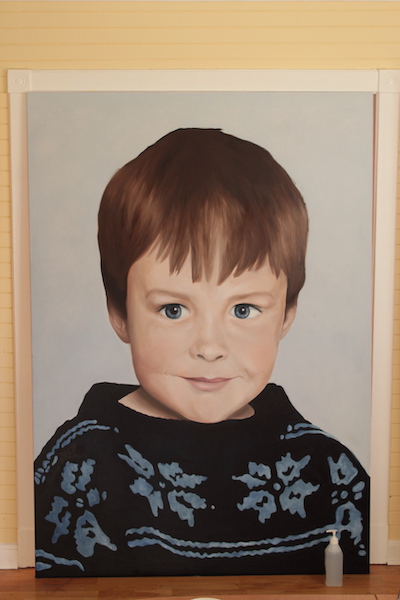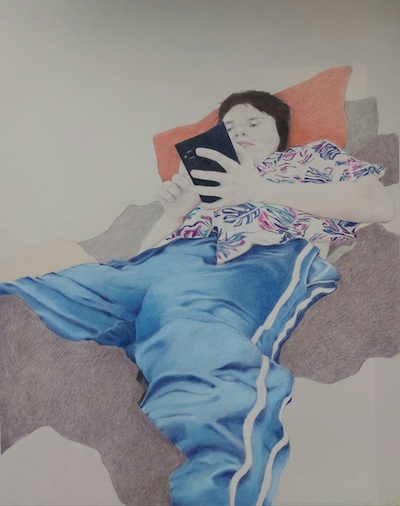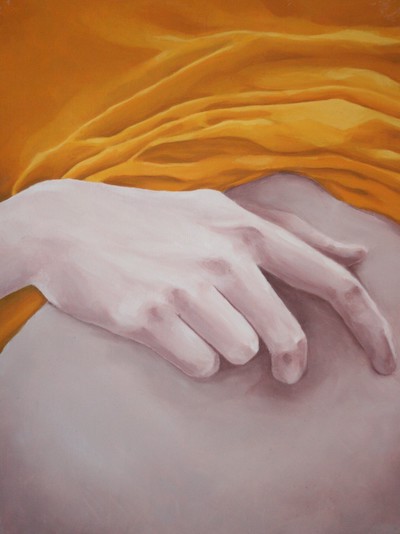
Gloomy Vibes is a program that generates comfortable lofi-esque beats intended for background listening. The idea was to make a program that would be able to write, mix and master beats without any human intervention. It took the program about 8 hours to make 140 beats.
Here are three of them
Blushing Aftermath
Law
Repulsive Pride
Find all 140 beats
If you want your own personal beat just reach out and I’ll make some more. Or should I say the program will make some more? There is a lot of discussion surrounding the use of machine learning and what constitutes consciousness that I believe I can’t offer any new insights into. However, Gloomy Vibes doesn’t use any type of artificial intelligence but rather a set of rules that I have defined. So am I the creator or not? In my view, creativity has yet to be properly defined. Which is weird seeing as my bachelor’s degree is in something called “Creative Musicianship”. It is very hard for me to discuss the meaning of the word “creation” without waxing philosophical about destiny, divinity and ultimately existence itself. Probably not what you came here for.
So how does it work?
Gloomy Vibes took little under a year to make and was turned in as my
final project at
IUA.
My advisors for the project were
Ríkharður H. Friðriksson
and Steindór Grétar Kristinsson.
If you want to go into extreme detail, the program is included in my
master’s thesis which is accessible, in english,
here.
To briefly summarize my essay, the program is written in
Supercollider
and uses various third-party plugins for sound generation. Most of
the code deals with composing midi files that are then rendered to
wav through virtual instruments and effects that have been prepared
by me, culminating in a wav file with a catchy title. I used
this program to render the midi, it's written by my father.
This whole process happens with the click of a button and repeats
itself however many times you want.
Positive Vibes
It’s hard to talk about Gloomy Vibes without mentioning its predecessor “Positive Vibes”. Gloomy Vibes is essentially built on top of another generator, named "Positive Vibes", which I wrote in Supercollider as well. It more or less works the same as Gloomy Vibes but the output of Positive Vibes, as you might suspect, sounds different.
Here are three examples
You are Astounding to me
You are Outstanding in the morning
You are Wonderful in every single way
As you might be able to tell by the titles above, Positive Vibes is meant to sound happier than Gloomy Vibes. The tracks are faster, instruments cleaner and percussion and lfo patterns are more diverse. The two generators share the same harmonic and melodic algorithm.
Silver Pills
I first learned about Supercollider the day my 2 year master’s program started. Before IUA I was at Bimm where my main focus was on production and drumming. I became acquainted with a host of DAWs at the time but Ableton Live became the main one pretty quickly. At the end of my first year at IUA I created a generator in Supercollider which plugs into Ableton Live, where the sound generation happens. This generator is able to compose music indefinitely but only in realtime. Which means that in order to save any music the Supercollider/Ableton Live generator makes, one has to record it. This is not the same as Gloomy nor Positive Vibes in the sense that the program cannot render files and then change them afterwards. What you hear is what you get, essentially.
Here are three "Silver Pills"
Silver Pill 1
Silver Pill 8
Silver Pill 19
Silver Pills also generates loop based music like its successors and is named after a line in the song “The Sound of Muzak” by the band Porcupine Tree. The line goes: “Now the sound of music comes in Silver Pills. Engineered to suit you building cheaper thrills.” I understand that the line, and the whole song for that matter, is a criticism of stuff similar to what I’ve done. But, as far as I’m concerned, the number one problem facing music appreciation in our world today is the constant focus on the musician above the actual music. I’ll discuss this topic further down in a section labeled “The Concert”.
Duke1
If you’ve read this far then you might have noticed that Supercollider gets mentioned several times but it was not the first music programming environment I learned about. When I first started programming I used Csound. By mid 1st year at IUA I created a program called “Duke1”. I had created similar programs before, but this one was by far the most extensive. The music it outputs is also loop based, like the others, but it was made before I knew how to make algorithms that could compose the loops themselves. Duke1 retrieves loops from a loop library I made. The library contains hundreds of loops that are categorized by harmonic content. Duke1 only deals with organizing the loops on a timeline and filtering them. The main inspiration here was the ever so popular lofi hip hop feed by “Lofi Girl” and like that feed, Duke1 was streamed live on youtube. But only for a couple of months.
Here's how it looked
Atmospheres
All of the previously mentioned generators output loop based music. Most of my other music is loop based and most of the music I listen to is loop based. However, this generator, made entirely in Ableton Live, is not loop based. Most generative music out there is not loop based and when I started making generators in Ableton it became clear why. It is possible to make loop based music generators in Ableton Live but making “regular” constantly-changing generators is much more intuitive, in my view. I created a lot of them but one day I decided to create a series of them. I call them “Atmospheres” and they differ from one another in a myriad of ways.
Here are all of them
Atmosphere 1
Atmosphere 2
Atmosphere 3
Atmosphere 4
Atmosphere 5
Atmosphere 6
Atmosphere 7
Atmosphere 8
Atmosphere 9
Atmosphere 10
The Concert
As the end of my time at IUA approached it became clear that I couldn’t wiggle myself out of throwing a concert. Here I was studying alongside (and under) composers who all dreamed of having their pieces performed by instrumentalists in concert halls. And I had a background music generator. I was a bit bummed out that I had spent all this time on something that had been objected to by my fellow students and teachers only to be snagged on some technicality in regards to presentation, which only existed because of tradition. Needless to say, I felt like the odd man out. I wanted my studies to be about something a bit less egotistical than my image. I felt like the concert format was more about how the musician is seen rather than how the music is heard. Sidenote, it has been really hard to make this website you’re currently on because of the same reason. So how do you throw a concert with music intended for background listening? Simple, you throw a party and call it a concert. As luck would have it my 30th was coming up and I decided to use it as an excuse to throw a conceptual party criticizing this tendency to focus on the artist instead of the art. The idea was, throw a huge, heavily marketed party with painted portraits of myself everywhere. I was going to refer to it as my final concert at IUA, play Gloomy Vibes in the background and if anyone would ask about the music. I would say it's just a random Spotify playlist. All of a sudden, there was a pandemic and all concerts had to be cancelled. My fellow students had to turn in sheet music instead of a concert and I became the only one who could actually turn in music. We all lost in the end though. I wanted to hold up a mirror to a community whose principals I didn’t agree with only to fill my home with paintings of myself that hardly anyone has ever seen. I stand in awe of the irony of it all on a daily basis. Anyway, my better half, Mirjam Maekalle, played an integral role in all of this since she painted all of the portraits. Below are three of them.
"Huge Nökkvi"

"Bored Nökkvi"

"Nökkvi's Hand"

I briefly mentioned earlier that the idea was to “heavily market” the event. Me and Mirjam made posters and spent some time finding the proper ballroom for it all. I made a video ad that was attached to the facebook event which was also going to be used as an ad on other social media platforms.
Here is the ad
I was at IUA from 2018 to 2020. If you’ve read everything on this page then you know what my main focus was while studying at IUA. I did a lot more stuff while studying there which can be read about under other works on this site. Immediately after I finished my master’s I got a grant to do another generator called Algorithmic Trap. Thanks for taking the time to read this.




